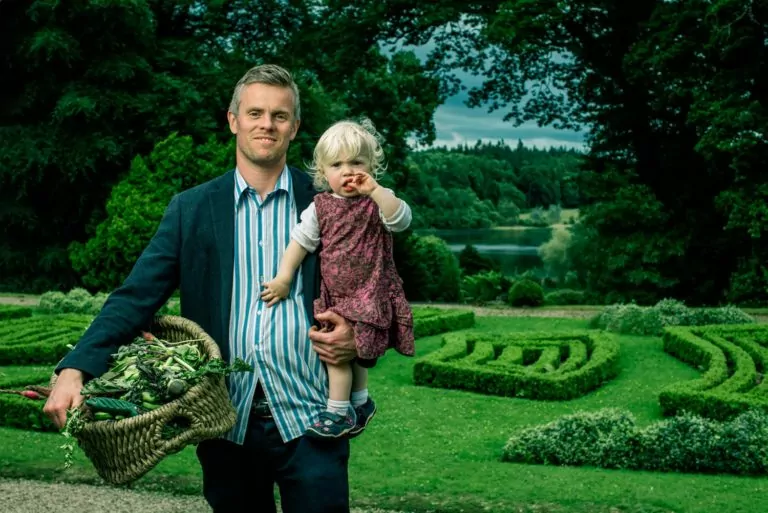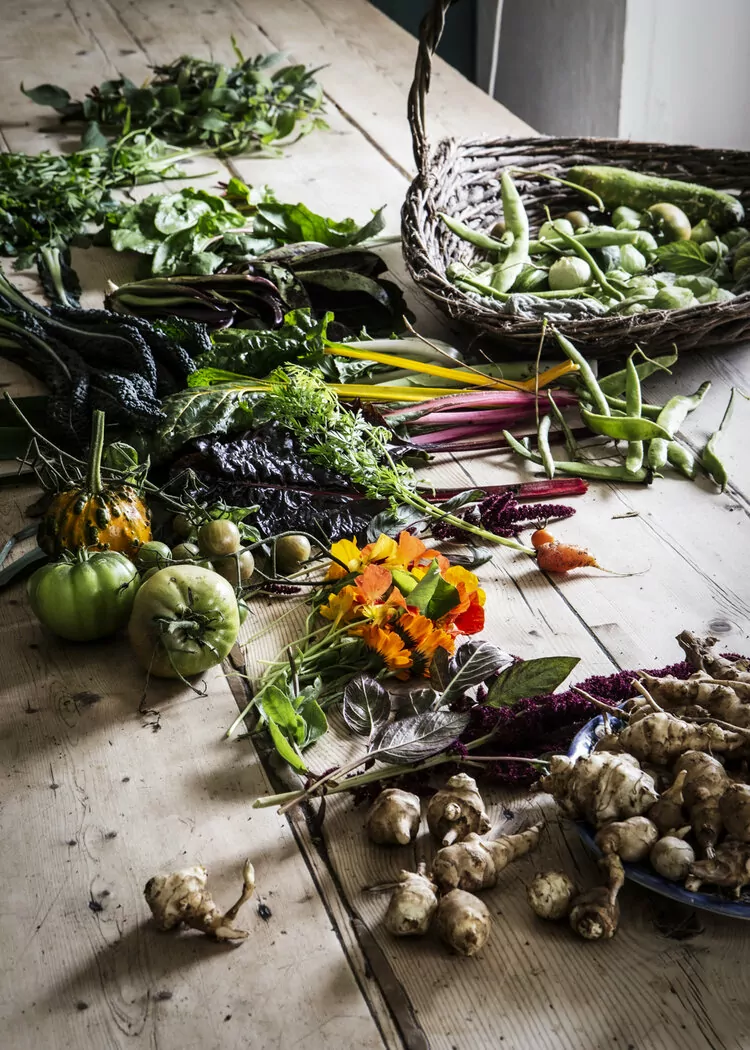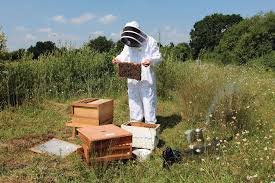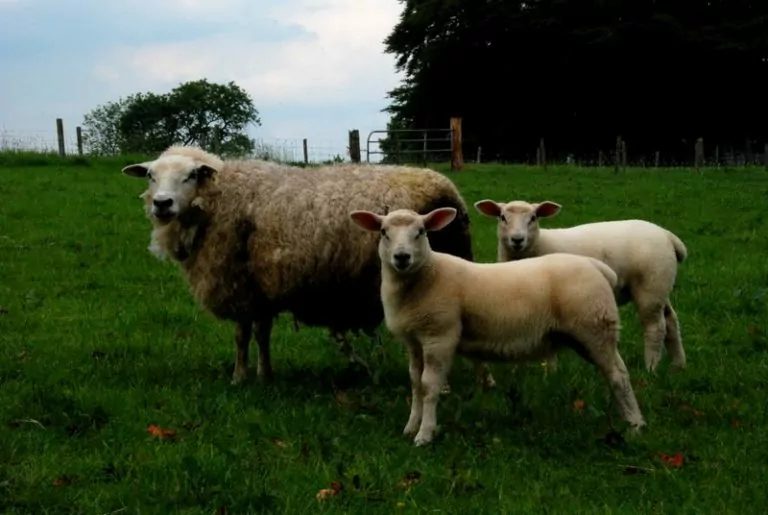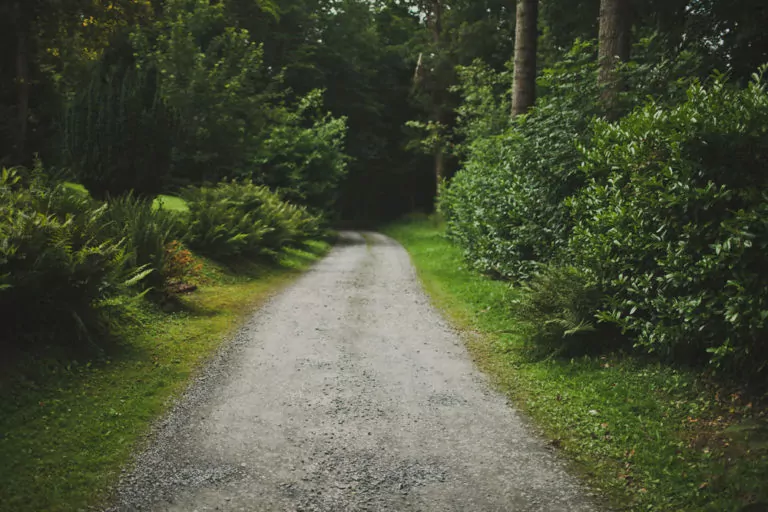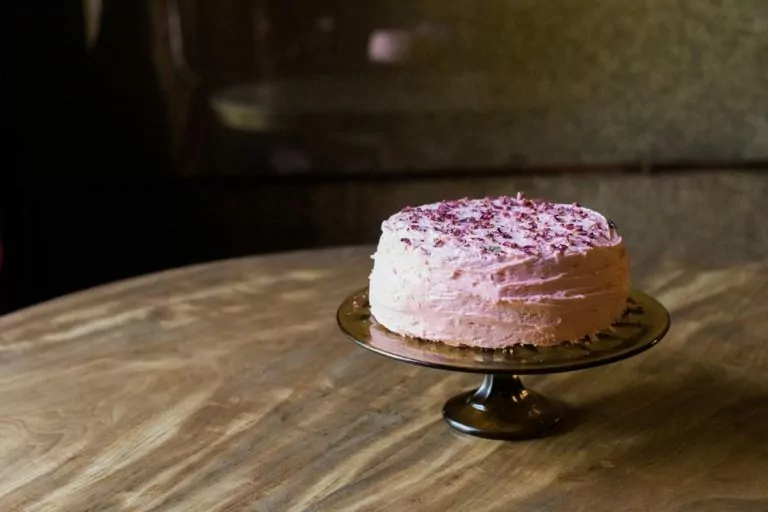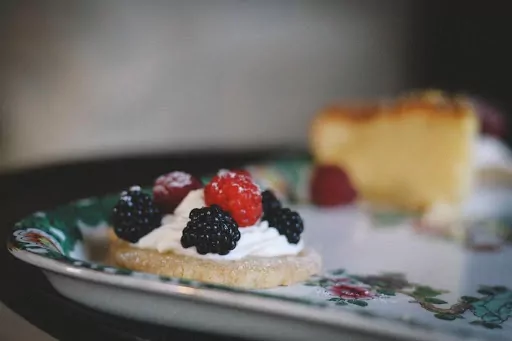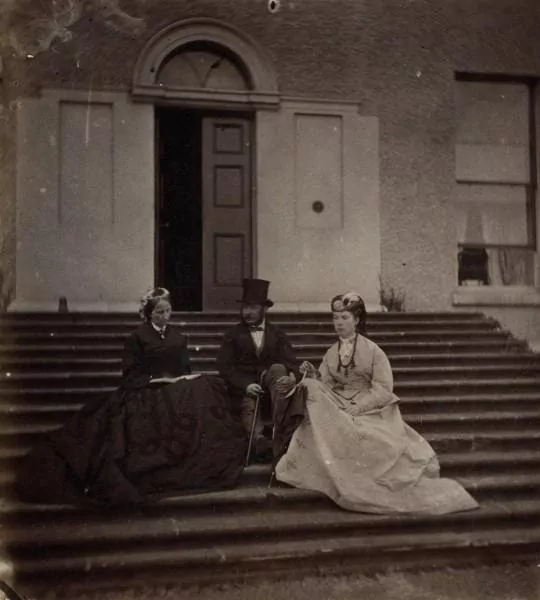Hilton Park, a home...
Our Story
Hilton Park is a 400 acres wildlife estate, where three generations of the Madden family now live and work, ten generations on from when the philanthropist and writer Samuel Madden purchased the land on a 90% mortgage in 1734.
The emphasis on sustainability is at the core of what we try to do; restoring and maintaining a historic home and conserving our rare and diverse natural habitat. Hilton is a vast property where we chose to keep things small and intimate; a welcoming family run country house, biodynamic farm and kitchen garden with the emphasis on traditional ecological principles.
We are neither able nor willing to manage the estate as a profit-maximising enterprise. We try to implement a balanced approach of financially supporting a rare heritage property through low impact enterprises while conserving the incredible natural environment of our designated Wildlife Estate.
Farm & Walled Garden
Farm & Walled Garden
We all read a lot about phrases such as ‘dedication to the environment’ and ‘farm to fork’. At Hilton we actually do it and have done for years. Our magical kitchen garden embodies many of the horticultural practices that are both sustainable and beneficial to the environment. Acclaimed Food writer and honorary member of the Irish Food writer’s guild Lucy Madden has been growing a range of vegetables, fruits and herbs that seasonally nourish our guests.
The walled garden also plays host to our resident beehives as well as our free-range pigs that forage through acres of woodland and bramble. A visit to the walled garden lets guests experience first hand our dedication to our environment and the responsibility we feel as landowners. Lucy and Fred are on hand to talk visitors through these processes and how they can apply them to even the smallest of urban gardens.
Wildlife Estate
One of only four accredited wildlife Estates in Ireland, Hilton Park is home to a range of endangered wildlife; from red squirrels to kingfishers, woodpeckers to native dark honeybees. On our many trails you may also encounter pine marten and even an otter on the lakeshore.
We were also the proud recipients of an honorary award by the RDS in recognition of our woodlands. Here you will find Giant Redwoods, Champion Beech, Native Scots Pine and numerous other Native and Exotic species.
Slow Food Ethos
It is both rare and a privilege to have a garden and kitchen in such close proximity. This is perhaps why Hilton has long been associated with culinary expertise and the much-chronicled produce of the kitchen garden. Lucy Madden is acclaimed as one of Ireland’s best cooks and food writers and has written “The Potato Year, 365 ways of cooking potatoes”, a labour of love and homage to the humble spud. She now spends much of her time growing ingredients for the Hilton kitchen. Fred, her son, took over the reins in 2009, training in London under Rowley Leigh at Kensington Place and more
recently at the Carpenters Arms, famously awarded that rare thing, a five-star review by A.A Gill. Great emphasis is placed on growing and sourcing seasonal produce. Our dishes are inspired by the fruit, vegetables and herbs grown in the four-acre walled garden. Spring lamb, pork and venison as well as trout and freshwater fish are also sourced from the estate and regularly feature on the menu. We derive no greater pleasure than serving our guests produce sourced from the kitchen garden and estate.
“Food at Hilton Park was the best we had in Ireland…”
– Jerry Hulse’s Travel Tips, Los Angeles Times
“Lucy turns out some of the most delicious and appropriate food I’ve tasted anywhere.”
– Darina Allen, The Irish Times
Dinner
Dinner is served in the dining room, acknowledged by many to have one of the finest views in the country. It is a set 4 course menu, although of course we can cater for any special dietary requirements with prior notice. Guests can dine communally or separately amidst flickering candlelight while enjoying the s view of the lake, shimmering with the evening light.
Breakfast
Breakfast is served in the restored vaulted servants’ hall. Choose from a wide array of fresh and poached fruits, organic yoghurts and delicious homemade granola. Bread is of course baked fresh that morning, and served with homemade jams such as Strawberry and Lavender and Green Tomato and Cardamom. We serve sausages made by the Craft Butcher Stephen Larmer. We source Fermanagh Black Bacon and Pudding from the highly acclaimed Pat O’Doherty in Enniskillen. For those seeking an alternative to the famous ‘Full Irish’, fish options are available, such as Sorrel and Haddock Fish Cakes or Organic Smoked Salmon.
Afternoon Tea
A luxurious affair with cakes still warm from the oven, chosen with care and perhaps including fruits in season. A selection of dried tea leaves or fresh herb teas picked from the historic herb garden are also available.
“There is a special pleasure in sipping an aperitif while sitting beside a huge log fire in the drawing-room at Hilton Park, with its fine plaster work and ceiling and old, well-upholstered furniture, in the sure knowledge that dinner is the best that can be had anywhere in the counties.”
– Colm Toibin, writer
House
Hilton Park is one of the great surviving houses of Ireland. Built in 1734 the house combines elegant historical grandeur with contemporary country house comfort.
Located in the remote and unspoilt drumlins of County Monaghan yet just 90 minutes from Dublin and Belfast Airports, Hilton is perfect for corporate groups or families and friends seeking the intimacy and exclusivity of a stunning property set amidst 400 acres of undisturbed natural beauty.
The house has magnificent reception rooms, including one of the country’s finest dining rooms that is the perfect setting for those special occasion dinner parties. The house also features a more informal living spaces with stunning vaulted ceilings, a classic country house kitchen for self-catering groups. The house also a table tennis room, billiard room and library. Outside there is croquet and lawn games, fishing on both lakes (plus wild swimming), a rowing boat and complimentary golf on the next door 18 hole course. A stay at Hilton will feel like you’re a million miles from anywhere. But for those in search of a truly authentic Irish pub, fear not for Connolly’s Pub a mere fifteen-minute walk through the estate serves up a truly great pint beside a roaring fire. The intriguing history of the house by Johnny Madden
There has been a house at Hilton Park since the early 17th Century, although its earliest name was Killshanless until changed to Maddenton, presumably in recognition of the earlier Madden property in Co. Kildare and was finally changed to its present name at the end of the 18th Century. When Samuel Madden purchased the estate for his third son in 1734, he built a house incorporating the original building. In 1803 a servant, answering a call of nature or the bell to lunch, history does not relate which, put down a bucket of glowing coals from a cleaned-out grate and burned down the house. It is said to have burnt for two days the glow being seen in Clones. The main and upper floors were completely gutted, many works of art and furniture perished and most of Samuel Madden’s archive, then housed at Hilton, was lost.
I must add a footnote to the foregoing about the fire. In 1984, I was made aware that a painting by Thomas Roberts had recently been sold by the Cynthia O’Connor Gallery in Dublin, which showed the artist sitting painting with his patron, Colonel Madden, looking over his shoulder in an extensive landscape of Upper Lough Erne with Knockninny in the background and most tantalising of all, with the only depiction of Manor Waterhouse to exist today. Tragically the Gallery did not offer this painting to the family before selling it. Apparently this painting was found in a frame behind a portrait in a house in Galway. I have no doubt in my mind that this painting belonged to the family and would have been removed to Hilton, when the family gave up Manor Waterhouse and because of its content I am equally certain that it would never have been disposed of. If I am right, this begs a number of questions. If this painting survived the fire, was it looted? If it was looted, how much else suffered the same fate? If there was much looting, might it be that the fire was started deliberately, as the family were away from home at the time? Which begs another question; how infallible is history?
The house was rebuilt over the following 15 years or so, it is believed to the design of James Jones; meanwhile the family lived in the male servants’ quarters over the stables. The two principal bedrooms and the dining room remain intact from this rebuilding, as does the north end. The dining room has a fine ‘Nelson’ ceiling of ropes and oakleaves, reflecting no doubt that Admiral Lord Nelson had fallen at Trafalgar in 1805 and that Colonel John Madden’s father-in-law, Admiral William Wolseley, had been Admiral of the Red in his fleet.
The next John Madden, a true Victorian ‘improver’, set about transforming his house in the 1870s into an Italian ‘palazzo’, with the technical assistance of the young, local architect, William Hague, who became well known as architect of many fine Roman Catholic churches, including the cathedral in Monaghan. This involved digging out the basement, so that it became the ground floor, introducing a new hall, inner hall, staircase and gallery, as well as a ballroom and boudoir. The exterior was encased in cut Dungannon sandstone; enrichments and a handsome ‘porte-cochere’ were added. The house was then virtually fortified with steel shutters and a massive front door in deference to the Land League, who by then could smell the blood of the landlords.
The Hilton that John Madden bequeathed is today substantially as he altered it, except that it is electrified, centrally heated, every bedroom has its ‘en suite’ bathroom and the ballroom has been divided to make two drawing rooms.
As a ‘piano nobile’ the main floor commands outstanding views over the park, parterre and lake. Hague’s fine watercoloured architectural drawings for these works can be seen on the way downstairs to the breakfast room. Madden records in his diary that he consulted Sir Charles Lanyon, but it is probable that he engaged Hague because he was cheaper and more likely to accept the influence of his patron than the older man. The house is furnished with period pieces that have been here for generations and musical guests are encouraged to play the splendidly original ‘Erard’ concert grand piano, which is contemporary with Chopin and is exactly the piano he might have played. There is also a fine chimney piece that Colonel John brought back from Naples in his yacht in the first decade of the 19th Century. Through the back windows the colonnaded ride that he built can be seen, under which his horses were exercised on wet days – it is believed to be unique in Ireland.
History Of Hilton Park
The family is descended from the princes of Oriel and in particular from Maine, who left Clogher in the 5th Century to find less populous lands, for they were a quarrelsome breed and were always warring and fighting among themselves. Maine settled a large area astride the Shannon and became the progenitor of the tribes of Hy-Many. From Anmchadh, son of Eoghan Buac, fourteenth in descent from Maine, sprang the tribe of O’Madden, who were the chiefs of Siol Anmchadha. Our line almost certainly comes from John O’Madden, great grandson of Eoghan O’Madden, the celebrated Lion of Birra and Chief of Siol Anmchadha, (1323-47). Two of John’s elder brothers were Chiefs of the clan from 1411 to 1451 and one of their sons, Cobthach, killed his two elder brothers, Brasil and Diarmuid, to claim their birth right , but the third brother, Eoghan Carregh, killed him first to claim the chieftainship. From this constant quarrelling and frequent fratricide, John appears to have fled to England, where he settled at Bloxham Beauchamp in Oxfordshire. From parish records we know that he was in humble circumstances, but each generation seems to have improved their lot until four generations later, in 1599, Thomas marries Elizabeth Pettifer of a well-established local family: it must be presumed that the family became Protestant during the Reformation. Thomas Madden, the name having become anglicised, then becomes Comptroller to Sir Thomas Wentworth, later Earl of Strafford, the Lord Lieutenant of Ireland, returns to Ireland and takes up residence at Baggotsrath.
In 1635 his son John , attorney to HM Court of Castle Chambers, General Solicitor for Parliamentary Sequestrations, of Maddenton in Co.Kildare, married Elizabeth Waterhouse, heiress of Manor Waterhouse in Co.Fermanagh, thus contracting the second advantageous marriage in successive generations.
His son John, who was three times President of the Irish College of Physicians and clearly a most cultured man as he had a very valuable collection of early Irish and English historical manuscripts, married Mary Molyneux, sister of William Molyneux, who in 1684 founded the Dublin Philosophical Society to ‘the design of the Royal Society in London’.
It is not surprising that the next generation produced a remarkable philanthropist in the Rev. Samuel Madden DD. His brother John and his uncle, Sir Thomas Molyneux of Castle Dillon, in Co.Armagh, were founders of the Dublin Society and Samuel joined them within the first year and he set the agenda for encouragement of improvements in the Arts, Agriculture and Manufacturing by guaranteeing an annual sum for premiums from his own pocket, provided they were matched by the society; for this, as well as for giving premiums to Trinity College, Dublin, he earned the soubriquet ‘Premium’. Such was his generosity, Mrs. Delaney recalls in one of her contemporary letters, that his wife, who was something of a shrew, would not let him go out with any money on his person as he would give anything he had to any poor that he met. It was through Madden’s friendship with the Earl of Chesterfield that the Dublin Society received its Royal Charter. He was a collector of works of art and left Trinity 20 of his best paintings at their choice to hang in the Provost’s House for ever.
Madden wrote a number of books and plays, not always putting his name to them. The most interesting are ‘Reflections and Resolutions proper to the Gentlemen of Ireland’, which amongst many exhortations states that raw materials should not be exported to England, but rather that ‘value should be added at home’, and ‘A Memoir of the Twentieth Century’. A thousand copies of the latter were printed in 1735, but were destroyed prior to publication on the order of the government; only a half dozen copies survive. Two of his books, ‘Memoirs’ and ‘Boulter’s Monument’, published 1745, were dedicated to Frederick, Prince of Wales, to whom he had been tutor. It is interesting to speculate what influence this literary, cultured man may have had on the young prince, who contrary to the martial and philistine Hanoverians that spawned him, became the greatest royal patron of the arts and architecture since Charles the Second and who was left at home in Hanover for the first 20 years of his life, whilst his grandfather and his father ruled Britain.
A member of Swift’s circle and a kinsman of Oliver Goldsmith, Madden was particularly admired by Dr. Johnson, who said of him, ‘his is a name Ireland ought to honour’.
On the home front, Samuel was rector of Newtownbutler and kept a fine garden at Manor Waterhouse; in particular he was an expert in growing fruit and his manuscript catalogue and plan for ‘fruit trees planted in espalier hedges at Manor Waterhouse’ in 1740 is in the Hilton library. Tragically, all his manuscripts were left to his son, John of Hilton and they were lost in the fire 40 years later.
In 1734 he purchased the Hilton Estate, then comprising some 4000 acres, for his third son and around the same time bought an estate at Spring Grove, Rosslea, for his youngest son. As both his elder sons failed to bring children to majority, the Manor Waterhouse estate fell to John Madden of Hilton, but it appears to have been largely uninhabited after Premium Madden died in 1765 and the house hardly seems to have existed by the start of the 19th century. The old castle had been sacked in the Jacobite wars and it may be that the new one had not been well built.
The next generation, Colonel Samuel Madden of the Monaghan Militia, nearly finished the Maddens at Hilton, for this man was nothing like his namesake grandfather. He turned out to be a gambler and bon viveur and there is a vivid account of his excesses throughout the 1790’s , culminating in the fire of 1803, the arrival of his creditors in 1812 and his expiry in 1814. His son, Colonel John of the Monaghan Militia was left to pick up the pieces, about £5 million in today’s terms.Colonel John’s good fortune was a rich and prudent cleric, the Rev. Charles Dudley Ryder, for a grandfather, who seeing the calibre of his son in law, had kept most of his fortune from his daughter, knowing her husband would gamble all away. Dudley Ryder was the son of the Rev.John Ryder, Archbishop of Tuam, and had married Catherine, last of the Charnell family of Snarestone Hall in Leicestershire. The Snarestone Estate was made over to Colonel Sam by 1795 and would appear to have been sold soon after 1802; thereafter Dudley Ryder kept his powder dry until after old Sam’s demise. Colonel John appears to have worked hard and played hard. He took much of his lands on the Monaghan and Fermanagh estates in hand and became a noted breeder of Shorthorn cattle and hackney horses. So successful was he at the latter that long after his death people would come looking for horses of the ‘old Hilton strain’. He built the Ride, a colonnade for exercising horses on wet days under his study window. During an election, he even found time to fight a duel with the Lord Rossmore of the day, wounding the peer in the leg. He had always kept a yacht in Dublin Bay , with a skipper and crew of four but this was swapped for a smaller boat when he inherited his father’s debts. A member of the Royal Yacht Squadron, he won a race right round Ireland in the Ganymede and sailed off to the Mediterranean, bringing back from Naples one of the fine chimney pieces. He also built a villa at Sandycove to accommodate his sailing activities, where he eventually died in 1844, leaving a young widow and three sons , the oldest of whom was only seven, which resulted in the young heir being made a ward of Chancery. Sydney Anne, the young widow, was daughter of old Admiral William Wolseley, an old salt who had spent much of his life at sea and who had the distinction of being the only captain to share prize money with Nelson in the Mediterranean. Wolseley’s son, whilst serving as a midshipman on the flag ship HMS Superb, had the distinction of being presented to the Emperor Napoleon Bonaparte. Napoleon had put himself under the protection of the British navy after Waterloo and he was taken aboard HMS Bellopheron on which vessel he was to be taken into exile at St.Helena. Napoleon was invited to breakfast with Admiral Hotham on the Superb, where he was treated with full honours and insisted on being presented to all the officers.
Young John,(1837-1902) left more of a mark on Hilton than all his predecessors except the first. At 19 he sank the well, from which we still get our water, 135 feet into the ground under his own superintendence. At 21 he celebrated throwing off the yoke of the Court of Chancery by erecting the bell tower, which at around 70 feet meant that he had covered 200 feet up and down in two years. At twenty-four he travelled for months on horseback through the eastern states of America up to the Great Lakes; this only a year before the Civil War. Back home he joined Isaac Butt’s Home Rule Party, but failed to get elected in the three elections he fought. Disappointed, and particularly so when he saw Parnell take over the Home Rulers, he reverted to Toryism. The rest of his life he devoted to travel, improving – first the park, then the gardens and pleasure grounds and finally the house and all the time writing . He kept a diary from 1868 onwards and published his magnum opus, The Wilderness and its Tenants in three volumes in 1897; this meticulous work is an inventory of the natural world prior to the industrial revolution. Having read widely of the early travellers and hunters, he found during his own travels in the latter half of the 19th Century that much had been altered since the start of the century; that the great herds of buffalo had been reduced, that the Sahara had moved and he wanted to set down a yardstick by which future depredations could be assessed. The public were not sufficiently concerned to buy his book and his warnings went unheeded. Of particular interest to the family, is his journal, which records details of the estates in Monaghan, Fermanagh and Leitrim during and before his time. Another record of immense intrinsic value is the photographic record of his younger brother, Charles Dudley Ryder, who obtained a camera in 1858 when only 19 and his albums, up until his death in 1874 at Cork Barracks of typhoid fever, show the park, house and gardens as they were before being improved. Charles and his brother, William Wolseley, both served in the 8thKing’s Liverpool Regiment and both died within 5 weeks of each other, William in Brighton. William was very involved in the loyal orders and built the Protestant Hall in Scotshouse. There is some mystery about him because, from his brother John’s diary, it is clear that he was convicted of causing grievous bodily harm and he served two years in Strangeways Gaol, Manchester. One can only surmise that some loyalist fracas led to his conviction, but it should also be remembered that a letter of his instructing Protestants not to interfere with Fenian processions had much to do with defusing local tensions.
John appears to have been serious to a fault and to have had a highly developed sense of his own rectitude. He ‘laid an information’ in court in Dublin against the Fenians’ who he was convinced were going to contravene the Party Processions Act at an imminent rally, which he thought unreasonable as his side had kept that law at a recent event. His case was not accepted and to prove his point, he marched, at no little risk to himself, in the Fenian rally and was no doubt delighted to be proved correct. He was a Magistrate, a Deputy Lieutenant for two counties and High Sheriff. On being appointed Deputy Lieutenant for Leitrim, he refused the honour saying that he was no longer prepared to serve an administration that had presided over a complete breakdown in law and order. He was summarily stripped of all his honours and appointments ‘for this studied insult to the Queen’. He at least had the satisfaction that all the magistrates in Ireland signed a petition in favour of his reinstatement.
He married the niece of the 3rd Earl of Leitrim, known as the ‘wicked’ Earl who was popularly believed to exercise his seignorial rights on his tenants’ daughters, in particular on their wedding night. He was murdered in 1878. The funeral took place at St.Michan’s in Dublin and such was Leitrim’s reputation that a mob turned out and overturned the hearse and the mourners had to be rescued by the police.
Owing to Lord Leitrim’s unfortunate will, which all but disinherited his successor and left all to his elderly, well off cousin, who would gladly have renounced his right, litigation loomed again for John Madden, whose children had a reversion under the will. Madden felt it his duty to protect his minor children’s interest and so litigation commenced causing Lady Dartrey to write of him ‘…(he) is a semi-madman, who stood as a Tory Home Ruler for Monaghan in 1868 and wrote such outrageous letters that he was struck off the list of JPs’. It may of course be that her staunch Whig politics had something to do with her opinion.
And so to the 20th Century and Lt.Col. John Clements Waterhouse Madden, ‘Jack’, (1870-1935). Called to the English Bar in 1895 and the Irish Bar in 1897, he had the task of winding up the estates as a result of the Land Acts, Acts which probably caused greater damage to the stock of great country houses in Ireland than all other events. Prior to Independence he held the usual posts that went with his rank, JP, High Sheriff, DL. He was a Standing Committee Member of the Ulster Unionist Council and a Deputy Grand Master of Ireland in the Orange Society. Incensed, however, by the activities of Craig and Carson whereby they engineered the setting up of the Boundary Commission and so tore up the agreement that the nine Ulster counties would remain under the Crown, he resigned from the Orange Order, disgusted that the Belfast Loyalists were loyal only to themselves. He made his own submission to the Boundary Commission, that the border should be a visible water boundary, coming in the estuary of the Erne in the west and exiting at the mouth of the Fane in the east. Whatever sense this may have made, it was a self serving device to try to ensure that Hilton remained north of the line and that the works of the Great Northern Railway, on the north bank of the Fane in Dundalk, would do likewise.
After Independence he was elected a Monaghan County Councillor. During the Troubles of 1920-1922 he took certain defensive measures at Hilton, that were designed to protect his property in the event of attack, no doubt comforted by his father’s foresight in installing steel shutters half a century before. The Colonel was of massive frame and utterly without fear. He was a hard taskmaster and much disliked at Clones railway station where he never found things to his liking as a director of the Great Northern Railway, expecting standards of turnout from railwaymen more appropriate to that of guardsmen..
On one occasion he crossed swords with General Eoin O’Duffy of Blueshirt fame.Jack had been to Belfast by train on GNR business and on his return to Clones station found his car gone. He was told it had been commandeered in the name of the State by General O’Duffy and was thus forced to walk the 4 miles home in pouring rain.
He wrote complaining at this high handed treatment and he asked the General to tell him if his government wished people such as he to leave the country. The reply was non commital , non apologetic and cited national business.Jack married Agnes Tate, daughter of Sir William Henry Tate,Bt. and granddaughter of the donor of the Tate Gallery. His brother Gerald, who was killed commanding a battalion of the Irish Guards in World War 1, married Mabel Macpherson-Grant of Ballindalloch. Sister Sydney, romantic poet and publisher of ‘Rose Petals- for those who love me’, married Chandos, Marquess of Ailesbury and in later life had the misfortune to entertain Queen Mary and her waspish companion, Osbert Sitwell, at Savernake . Misfortune because Sitwell remembered her as a romantic girl pursuing some German princling at a ball and was struck sufficiently by the change wrought by the years so as to describe her in a book as ‘standing like a pillar of red granite’. It would be kinder to remember her by her portrait at Hilton, depicting the romantic young girl holding her dog.
Jack’s eldest son, John William Ryder (1913 – 1996), was educated at Eton and Trinity Hall, Cambridge, where he was an accomplished oar. After university he joined the Irish Guards, serving in Palestine in 1937-8. He was in the party that took the Dutch Royal family and Cabinet off the Hook of Holland in 1940 and was in the thick of the bloody fighting that took place after the Boulogne landing in 1941. He then joined the 2nd Bn. Irish Guards, which was to form part of the Guards’ Armoured Division, with whom he landed in Normandy in 1944 but was wounded some 3 weeks later at La Marvindiere, losing a leg, which forced his retirement with the rank of Major. He brought his family to live at Hilton in 1945 and himself took a refresher course in agriculture at Cirencester. Encouraged by a neighbour, Jack Gibson, he established a Hereford herd, which became famous all over Ireland. Owning a great deal more land than the average in Ireland at that time, he saw it as his duty to use every square yard and to employ as many as possible on the land. He became a great innovator, introducing silage making to the area and planting orchards, Christmas trees, which he exported to Britain and Dutch bulbs; at one time in the 1950s there were five acres of daffodils, gladioli and tulips as well as onions. Subsequently he built up a dairy herd and became a considerable expert on forestry. He advised a number of friends on their woodlands on a regular basis. His great strength was thorough research, wherein he consulted all the experts and read all the books, before starting on a project. He was a keen sailor of small boats and kept two ‘Snipe’ at Crom and sailed most weekends throughout the summer. A lifelong afficionado of motor racing, he competed three times in the Circuit of Ireland Rally in Morris Minors. A first class shot, it was easy to forget that he had but one leg. He married Nita Mellor in 1937, daughter of Brigadier-General J.Seymour Mellor CBE DSO MC and Betty Marquand, a granddaughter of Henry G. Marquand who made the original endowment to the picture gallery of the Metropolitan Museum in New York, of which he was President: she was also related to the Robeson family, big plantation owners in the Carolinas, from whom the singer Paul Robeson is said to have taken his name. Seymour Mellor was a distinguished soldier who fought in the Boer War, and the First World War, with the KRRC. In 1920 he went for two years to Poland to reorganise their police force; his ‘Letters from Warsaw’, which were compiled by his wife are a fascinating document of the times there. Thereafter he became a King’s Messenger on the Constantinople run and during the Second World War was Provo Marshal UK and Chief Constable of the War Department Constabulary.



